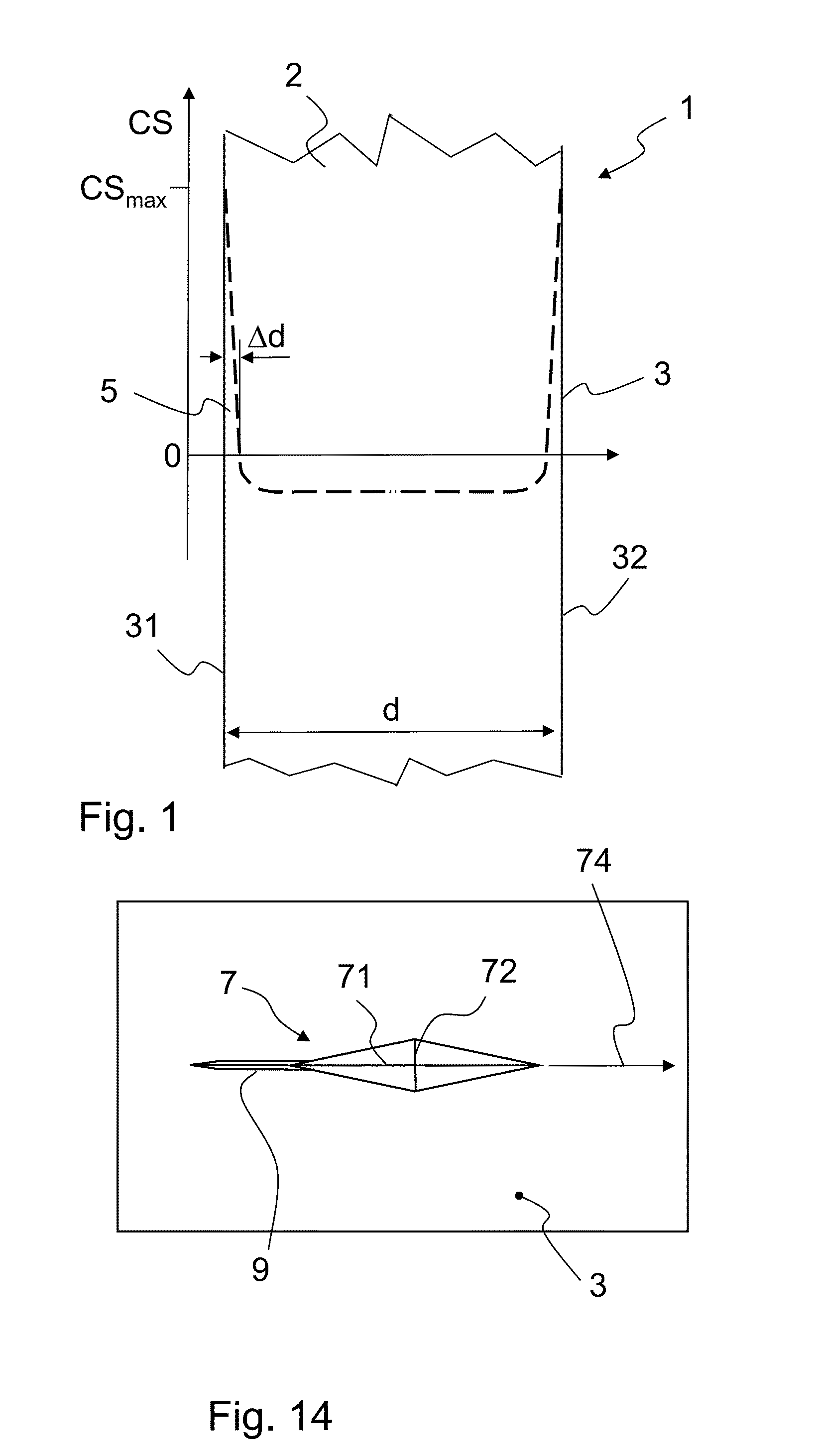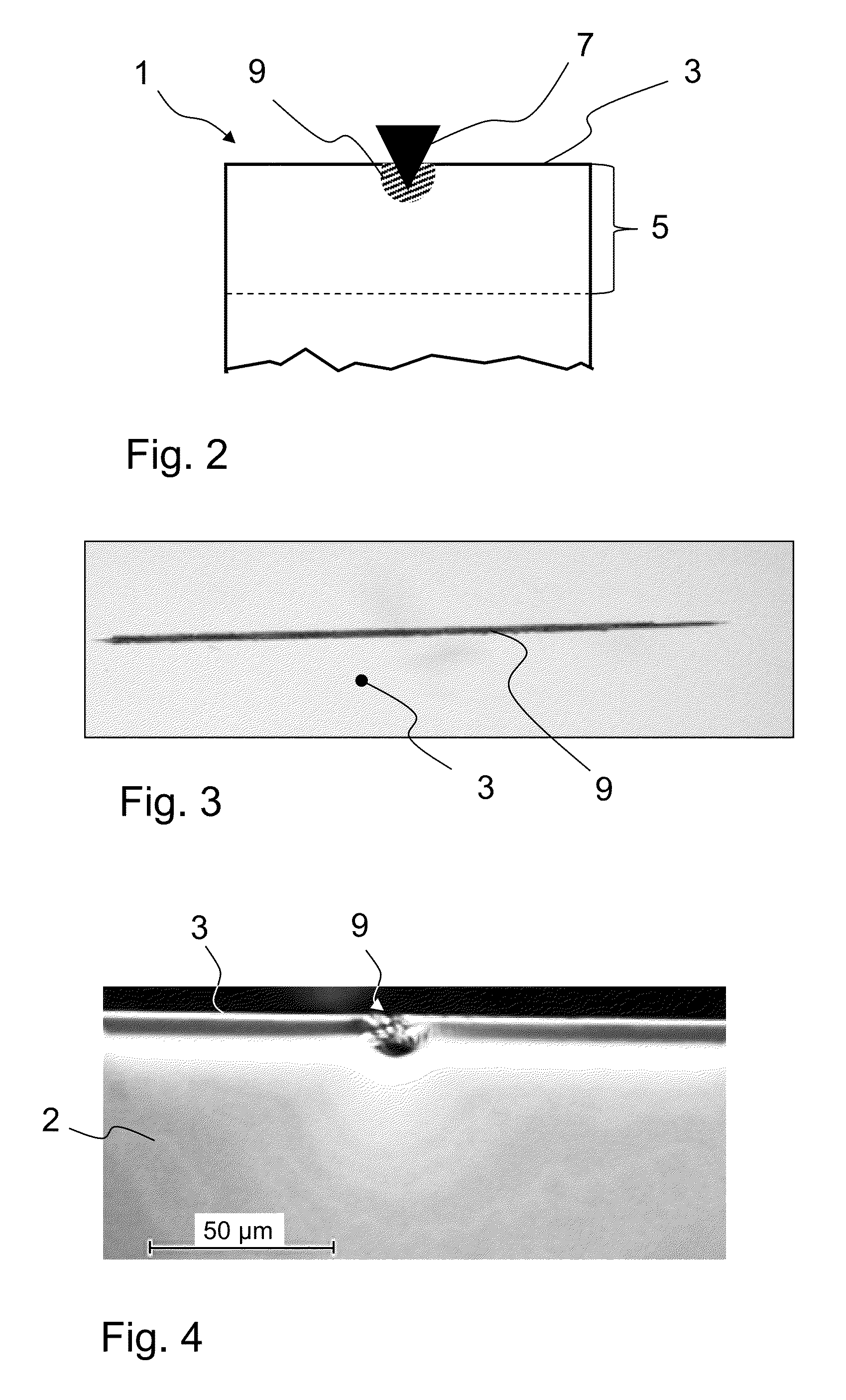Glass element with high scratch tolerance
- Summary
- Abstract
- Description
- Claims
- Application Information
AI Technical Summary
Benefits of technology
Problems solved by technology
Method used
Image
Examples
Embodiment Construction
[0077]FIG. 1 illustrates a sheet-like glass element 1 according to the invention. The glass element made of a glass 2 has a surface 3 with two opposite faces 31, 32. Glass element 1 has been chemically tempered by exchanging sodium ions at the surface 3 to an exchange depth of Δd. Due to the ion exchange and the larger size of the potassium ions which are present in a higher concentration at the surface, a compressive stress zone 5 is established. A superimposed diagram shows the profile of compressive stress CS. The compressive stress decreases from its maximum value CSmax at the surface 3 within a layer of thickness Δd and turns into a slight tensile stress in the inner regions of the sheet-like glass element. The layer of thickness Δd approximately corresponds to the compressive stress zone 5. The thickness d of glass element 1 preferably ranges from 0.4 to 1.1 millimeters. For such thin glasses the method of chemical tempering to increase strength is especially useful.
[0078]Glas...
PUM
| Property | Measurement | Unit |
|---|---|---|
| Temperature | aaaaa | aaaaa |
| Length | aaaaa | aaaaa |
| Length | aaaaa | aaaaa |
Abstract
Description
Claims
Application Information
 Login to View More
Login to View More - R&D
- Intellectual Property
- Life Sciences
- Materials
- Tech Scout
- Unparalleled Data Quality
- Higher Quality Content
- 60% Fewer Hallucinations
Browse by: Latest US Patents, China's latest patents, Technical Efficacy Thesaurus, Application Domain, Technology Topic, Popular Technical Reports.
© 2025 PatSnap. All rights reserved.Legal|Privacy policy|Modern Slavery Act Transparency Statement|Sitemap|About US| Contact US: help@patsnap.com



